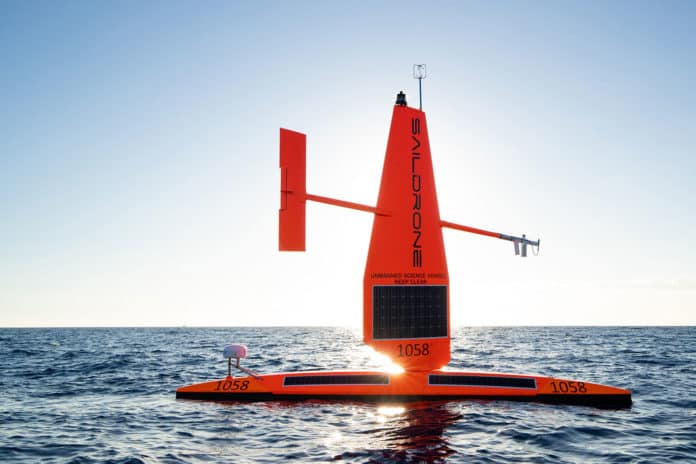It’s been said we know more about the far side of the moon than the deepest regions of the oceans here on Earth.
Earlier this summer, Saildrone, a maritime research company, joined forces with the National Oceanic and Atmospheric Administration (NOAA) to launch a fleet of five autonomous saildrones to collect scientific data from inside a major hurricane barreling across the Atlantic Ocean. Spending three months at sea, the fleet will compile the first hurricane research of its kind completed by ‘uncrewed’ surface vehicles (USVs).
On Thursday, Saildrone shared a video taken by its Saildrone Explorer SD 1045 that shows heaving waves at stomach-turning angles as witnessed by the drone ship. Saildrone has described it as “the first video footage gathered by an uncrewed surface vehicle (USV) from inside a major hurricane barreling across the Atlantic Ocean.”
The Saildrone Explorer SD 1045 is one of a fleet of five “hurricane” saildrones that have been operating in the Atlantic Ocean during this hurricane season, gathering data around the clock to help understand the physical processes of hurricanes. The SD 1045 was directed into the midst of Hurricane Sam, a Category 4 hurricane, on September 30, where it reportedly faced 50-foot waves and winds of over 120 mph, collecting critical scientific data and, in the process, giving a completely new view of one of Earth’s most destructive forces.
“Using data collected by saildrones, we expect to improve forecast models that predict rapid intensification of hurricanes,” said Greg Foltz, an NOAA scientist. “Rapid intensification, when hurricane winds strengthen in a matter of hours, is a serious threat to coastal communities. New data from saildrones and other uncrewed systems that NOAA is using will help us better predict the forces that drive hurricanes and be able to warn communities earlier.”
The Saildrone is the first of its kind to help NOAA scientists collect data on hurricanes, such as air temperature, relative humidity, biometric pressure, wind speed and direction, water temperature and salinity, sea surface temperature, and wave height and period for onward transmission. A special extra floating arm ensures that the vessel remains above water in ‘the heaviest storms.’ The company had stationed five different drones in the Atlantic Ocean in areas prone to hurricanes.
“Saildrone is going where no research vessel has ever ventured, sailing right into the eye of the hurricane, gathering data that will transform our understanding of these powerful storms,” said Richard Jenkins, Saildrone founder, and CEO. “After conquering the Arctic and the Southern Ocean, hurricanes were the last frontier for Saildrone survivability. We are proud to have engineered a vehicle capable of operating in the most extreme weather conditions on Earth.”
